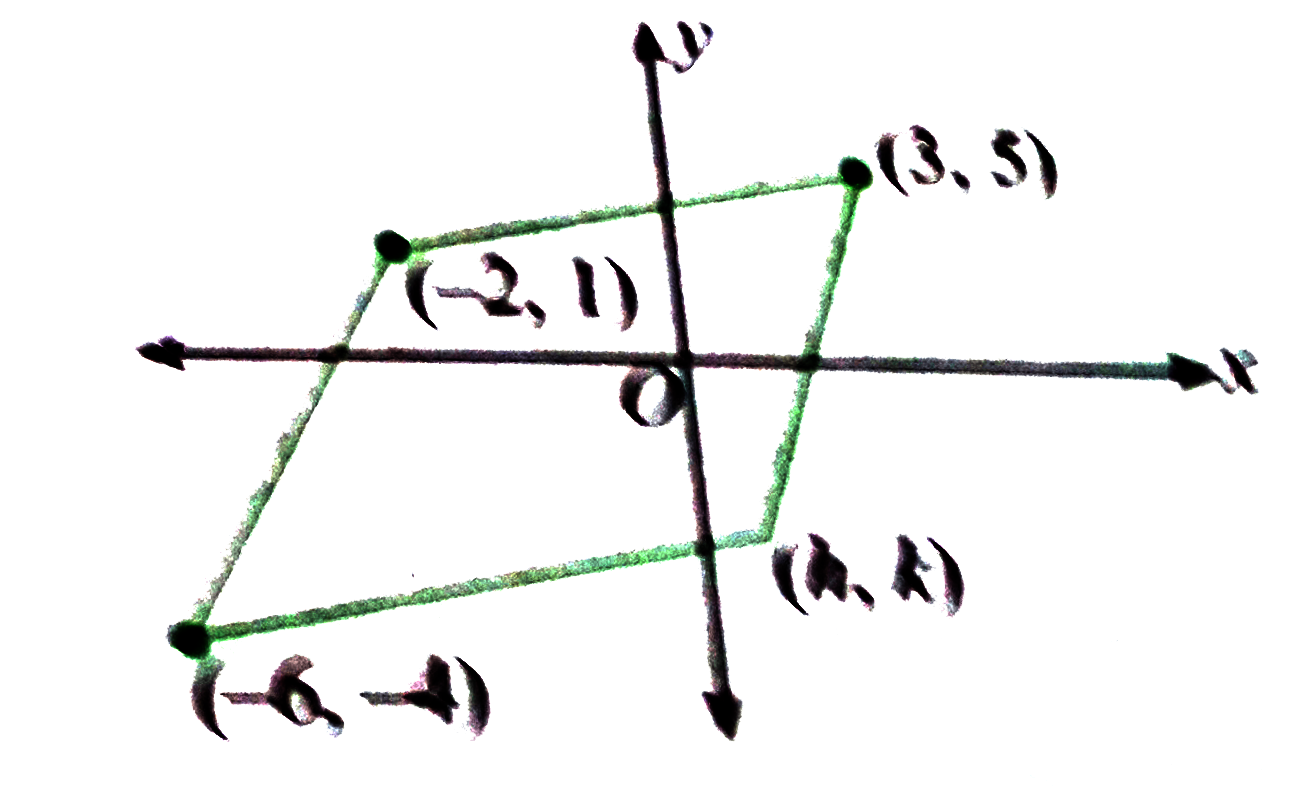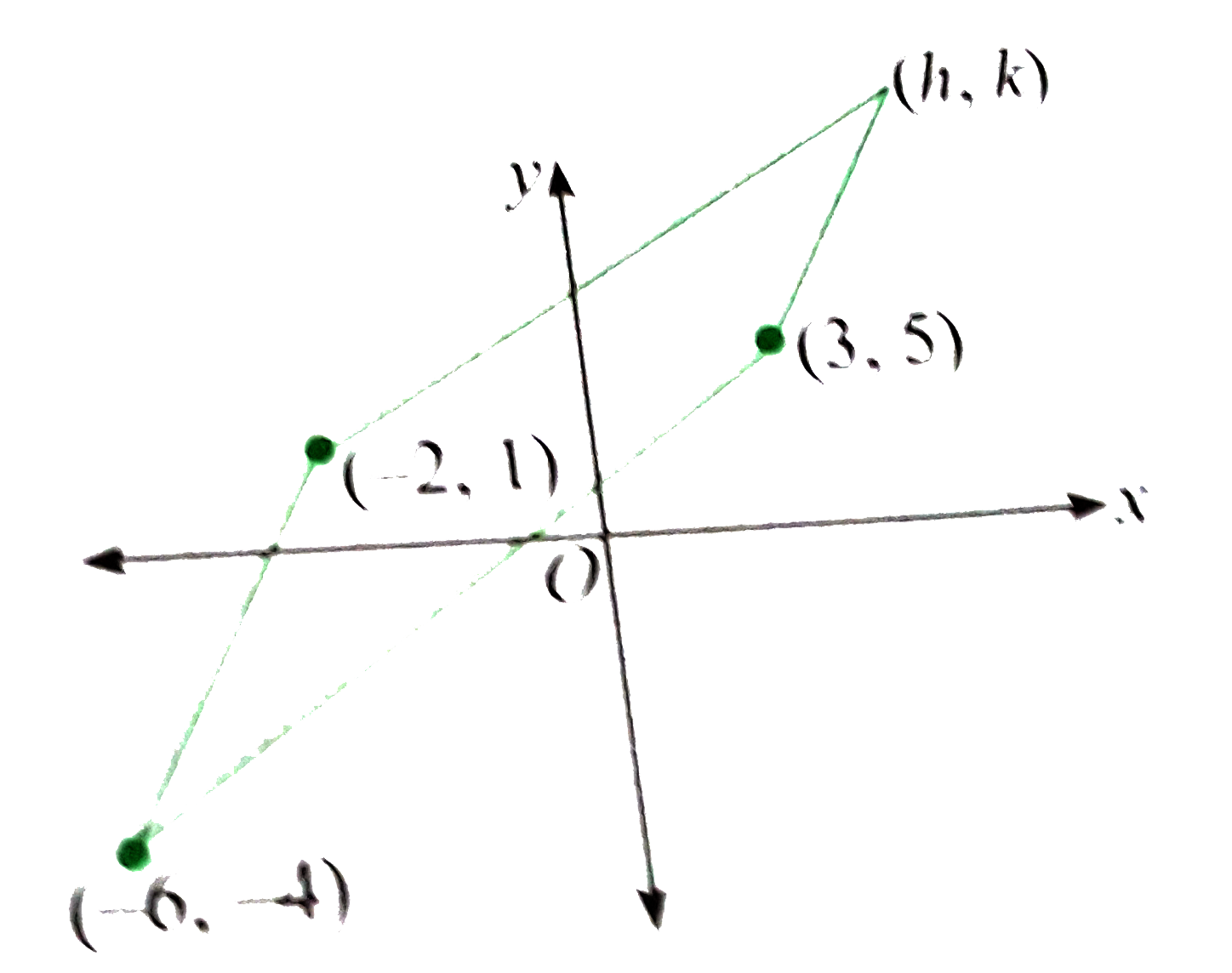If (−6,−4),(3,5),(−2,1) are the vetices of a prallelogram. Then the remaining vertex can be
(0,−1)
(7,10)
(-1,0)
(−11,−8)
The correct Answer is:B, C, D
If the remaining vertex is (k,k) then

h−2=−6+3,k+1=5−4
or h=−1,k=0

h+3=−6,k+5=−4+1
or h=−11,k=−8

h−6=3−2,k−4=5+1
or h=7,k=10
Topper's Solved these Questions
- COORDINATE SYSYEM Book:CENGAGEChapter:COORDINATE SYSYEM Exercise:Exercise (Comprehension)
Explore 10 Videos
- COORDINATE SYSYEM Book:CENGAGEChapter:COORDINATE SYSYEM Exercise:Exercise (Matrix)
Explore 4 Videos
- COORDINATE SYSYEM Book:CENGAGEChapter:COORDINATE SYSYEM Exercise:Exercise (Single)
Explore 59 Videos
- COORDINATE SYSTEMBook:CENGAGEChapter:COORDINATE SYSTEMExercise:Multiple Correct Answers Type
Explore 2 Videos
- CROSS PRODUCTS Book:CENGAGEChapter:CROSS PRODUCTS Exercise:DPP 2.2
Explore 13 Videos
Similar Questions
Knowledge Check
If (-6, -4), (3, 5), (-2, 1) are the vertices of a parallelogram, then remaining vertex can be
A(0, -1)B(-1, 0)C(-11, -8)D(7, 10 )If (−6,−4) and (3,5) are the extremities of the diagonal of a parallelogram and (−2,1) is its third vertex , then its fourth vertex is
A(-1,0)B(0,-1)C(-1,1)Dnone of thesePoints (4, -1), (6, 0), (7, 2) and (5, 1) are joined to be a vertex of a quadrilateral. What will be the structure?
ARhombusBParallelogramCSquareDRectangle
if (3,−4),(−6,5) are the exterimities of the diagonal of the parallelogram and (−2,−1) is itts third vertex then find fourth vertex,
View SolutionTwo vertices of a triangle are A(3,4,2)andB(1,3,2). The medians of the triangle intersect at (2,4,3). Find the remaining vertex C of the triangle.
View SolutionA(1,1,3),B(4,3,2) and C(5,2,7) are three vertices of a tetrahedron for which the centroid is (4,52,5) the fourth vertex is
View SolutionTwo vertices of a triangle are at the points (5,−2),(−3,6) and the centroid is at the (3,1).Then the coordinates of the remaining vertex
View SolutionThree vertices of a parallelogram are (1, 1), (2, 4) and (3,5), then the fourth vertex of the parallelogram can be:
View Solution